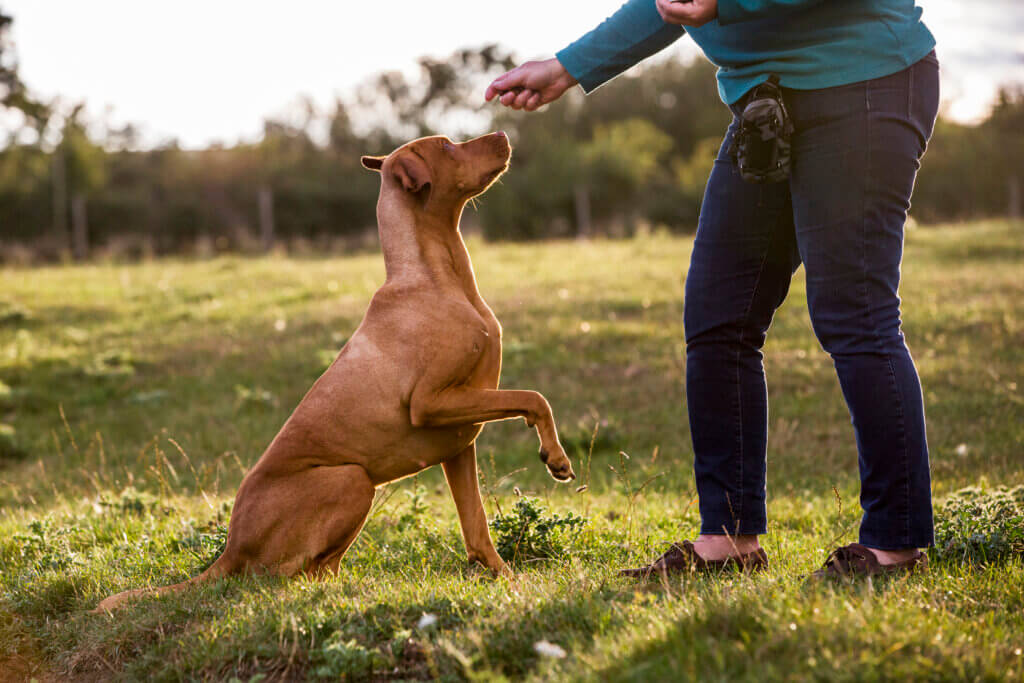If you have a dog who suffers from anxiety, you may wonder what steps you can take to help them. There are some basic techniques that you can use, such as Counterconditioning and Desensitization. Then there are some more specific steps that you can take, such as Socialization and Psychiatric service dogs.
Desensitization
Desensitization in dog training for dogs with anxiety is crucial. The process involves exposure to stimuli that are either familiar to the dog or evoke the fear response. This may be a low level stimulus or an increasing stress provoking stimulus.
When trying to desensitize a dog with fear, the dog needs to be in a calm environment. It is also important to understand the pet’s body language. By studying your dog’s body language, you can see what type of triggers and responses it is most likely to respond to.
Dogs have a rich emotional life. They are often triggered by positive and negative emotions. As a result, a dog can exhibit aggressive behavior.
Counterconditioning
Using counterconditioning in your dog training can be a great way to help them overcome anxiety. The goal is to replace fear with pleasure. You’ll need to be patient and use some judgment to get there.
First, you need to decide on what triggers your dog’s fears. You should make notes of the triggers and their intensity. Ideally, you should start with the least likely triggering event.
Once you have determined which triggers are most threatening, you should create a plan to minimize the intensity of these events. Your plan may include a variety of tactics. For example, you can reduce the frequency or duration of the triggers.
Changes in environment
A dog’s environment plays a key role in its behaviour. Dogs can develop fearfulness if their environment is unfavourable or if their socialisation is inadequate. Therefore, it is important to understand both genetic and environmental factors that contribute to dogs’ behaviour. Understanding these factors and implementing management practices to manage them can improve the welfare of pet dogs.
Fearfulness in dogs is a moderately heritable trait. There are various candidate loci associated with fearfulness, such as age, body size, and breed. However, more research is needed to identify genetic risk variants.
Similarly, the effect of environmental factors on fearfulness in dogs is still unknown. In this study, logistic regression was performed to identify the environmental factors associated with social fearfulness in dogs.
Psychiatric service dogs
Psychiatric service dogs can provide a host of benefits to people suffering from anxiety. Besides providing protection, a PSD can also alert a handler when he is feeling overwhelmed or frightened. This can help relieve tension, soothe feelings of loneliness, and reduce a person’s racing thoughts.
When a person with an anxiety disorder is in a public place, he may feel a sense of panic or fear. A PSD can be trained to sense when this happens, and can direct the handler to a safe area.
Psychiatric service dogs have special training to assist individuals with mental health problems. They can retrieve medications, remind a person to take medication, or even alert a handler to danger.
Drooling and panting excessively
If your dog suddenly starts drooling and panting excessively, it may be due to something serious. You need to take your pet to the veterinarian to determine the cause.
Dogs drool and pant because they need to cool down. They are also stressed and pant during activities that require strenuous physical exertion. Excessive drooling can be a sign of pain, illness, or other medical conditions.
Sometimes, a change in your dog’s environment can cause anxiety. For example, fireworks on Fourth of July might make your dog anxious.
Other things that can cause drooling and panting in dogs include insect bites, battery acid, and chewing electrical cords. Always keep a slobber cloth on hand to wipe up slobber.
Socialization stressors
One of the most common canine behavioural problems is fearfulness. This is a generalized fear of people, animals, and places. In some dogs, it can lead to a social anxiety disorder.
Some of the stressors associated with fearfulness in dogs are: noise sensitivity, lack of exercise, and a lack of socialization. However, there is no consensus on the cause. Despite this, there are some studies that indicate the effects of urban environment on the social fearfulness of dogs.
Noise sensitivity is a concern because owners who own dogs that are sensitive to loud sounds may experience difficulty getting their dogs to socialise and meet new people. Previously, lower levels of exercise were associated with noise sensitivity.

